OnePlus Pad
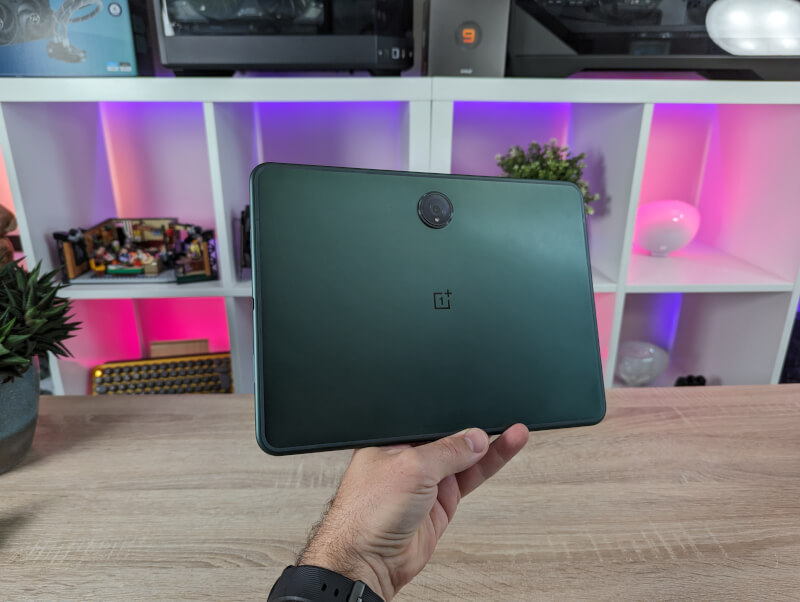
Specifications
- RAM: 8 GB LPDDR5
- Storage: 128 GB UFS 3.1
- Operating system: OxygenOS 13.1
- CPU: MediaTek Dimensity 9000
- GPU: ARM G710 MC10
- Charge:
- Battery: 9510 mAh/36.99 Wh (typical)
- 67W SUPERVOOC
- Screen:
- Size: 11.61" (measured diagonally from corner to corner)
- Type: LCD
- Screen to frame ratio: 88.14%
- Resolution: 2800 x 2000 pixels
- Refresh rate: 30/60/90/120/144 Hz
- Touch screen sampling rate: 120 Hz/144 Hz
- Contrast: 1400:1
- Brightness: 500 nits (typical)
- Rear camera:
- Megapixels: 13
- Video: 720p, 30 fps, 1080p, 30 fps, 4K, 30 fps
- Supports video zoom: YES
- Supports EIS stabilization : Yes
- Front camera:
- Megapixels: 8
- Video: 720p, 30 fps, 1080p, 30 fps
- Supports video zoom: No
- Supports EIS stabilization: Yes
- Height: 258.03 mm
- Width: 189.41 mm
- Thickness: 6.54 mm
- Weight : 552 g
Central features to focus on here are of course screens that come with a 144 Hz refresh rate, and then the MediaTek Dimensity 9000 ship that drives it all. Both parts are, on paper, really good specifications, which should contribute to a good experience. We will of course take a closer look at whether it all hits the mark further down the test.
A tour around the OnePlus Pad
One of the disadvantages of many Android-based tablets is that they are often made in an attempt to be a more budget-friendly alternative to Apple's popular iPad. This quite often means that, in order to save money, not so nice materials have been used.
It can of course be a very sensible choice if you want to keep the price down. However, this is often also one of the reasons why Android tablets feel like a less exclusive alternative to many.
On the material front, however, this is not the case with the OnePlus Pad. Here, OnePlus has chosen to make a tablet in CNC manufactured aluminium, which both looks delicious and feels comfortable. It has beautifully rounded edges and corners, and OnePlus has squeezed it all into a tablet that is only 6.54 mm thick and with a weight of only 552 grams.
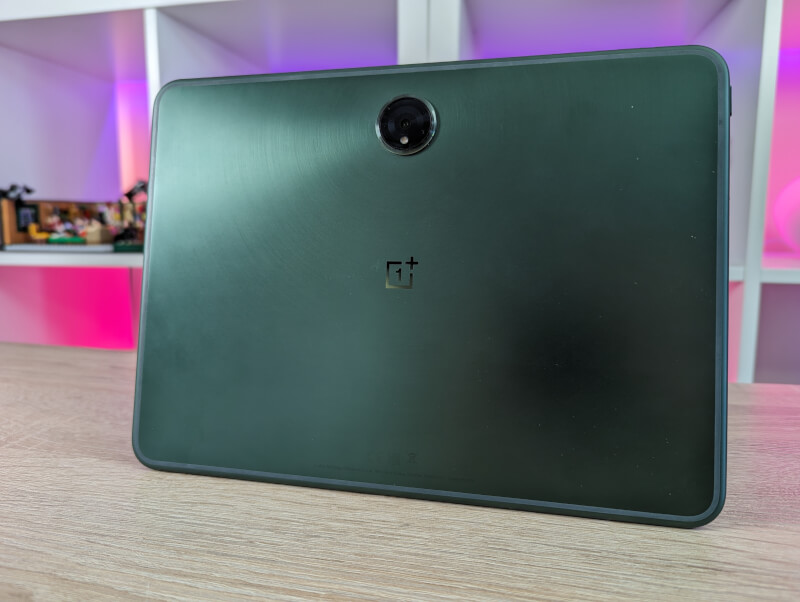
Just as we saw with the Google Tablet, the OnePlus Pad is also designed to be used primarily in landscape mode. As we get through the placement of the various elements, it becomes pretty clear. The descriptions below are therefore also made with a tablet in landscape mode.
There are four speakers placed, with two on each side, along with a USB C connector for charging and data on one side, and a power button on the other.
On the top there are volume buttons, and then it is cut more flat. It is to make room for the OnePlus Stylo pen accessory. It can be held magnetically here, just as you might know it from the iPad Pro version. It might be a bit of a copycat, but all else being equal, I don't think there is any shame in "stealing" a well-functioning solution.
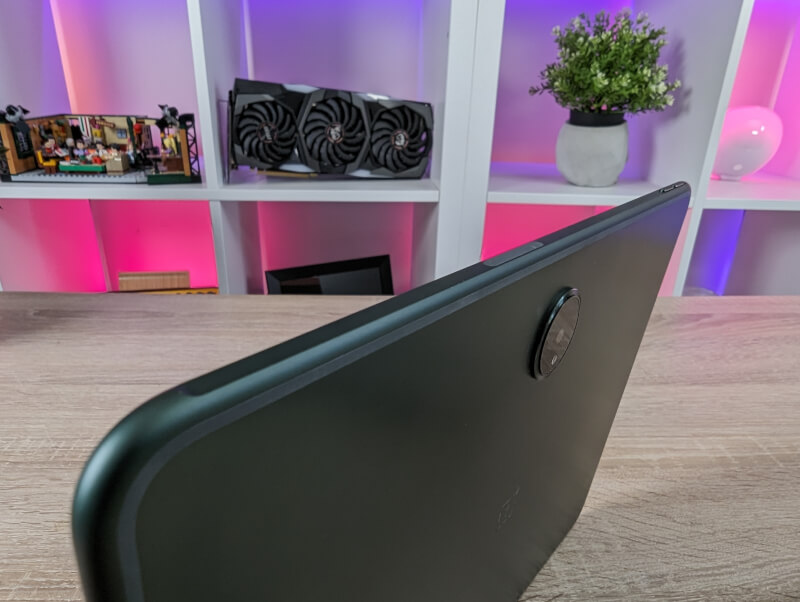
The OnePlus Stylo must be purchased separately, but was included in our test kit. It is held in place really well and also charges when it sits in its place here.
At the bottom we find three pogo pin switches which can be used for various accessories. It can be, for example, the OnePlus Magnetic Keyboard. It is again a separate accessory, but also came with our test kit.
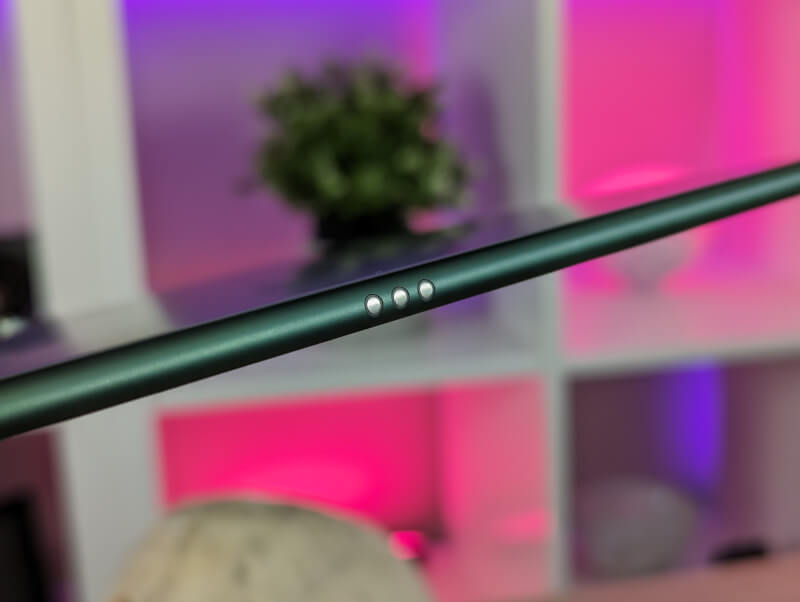
The OnePlus Pad is only available in one color and it is what OnePlus calls Green Halo. The halo part of the name probably comes from the very faint and finely understated circle pattern on the back, which is centered around the camera.
There is a reasonably sharp and clear camera bump, but since it is centered, it creates a fairly reasonable balance when the tablet is on a table. The placement of the camera here also shows that the design is aimed primarily at use in landscape mode. However, the sharp edges also mean that dust easily collects around the camera.
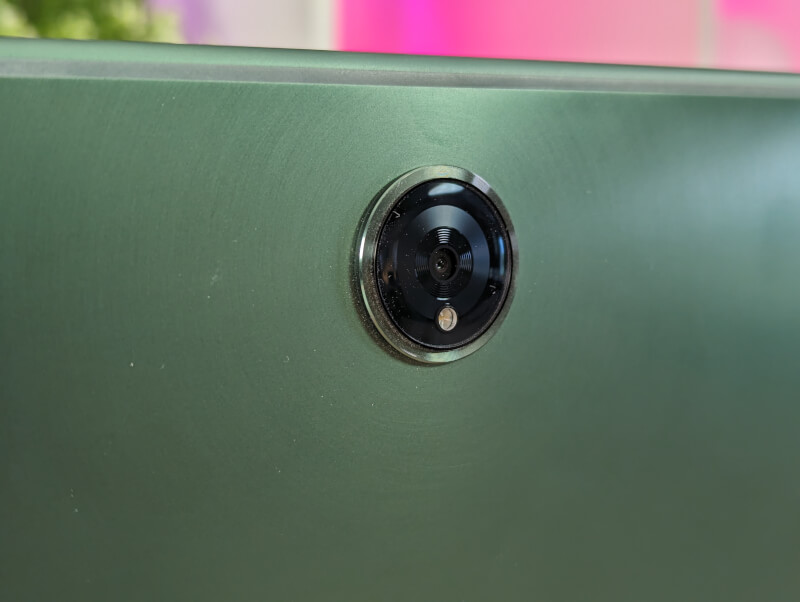
If we move to the front, we can also see that the front camera is located in the middle above the screen. It is a position which is ideal for video calls etc.
The 11.61" screen naturally takes up most of the front. It has slightly rounded corners and the screen-to-frame ratio is 88.14%, so the frames are relatively narrow.
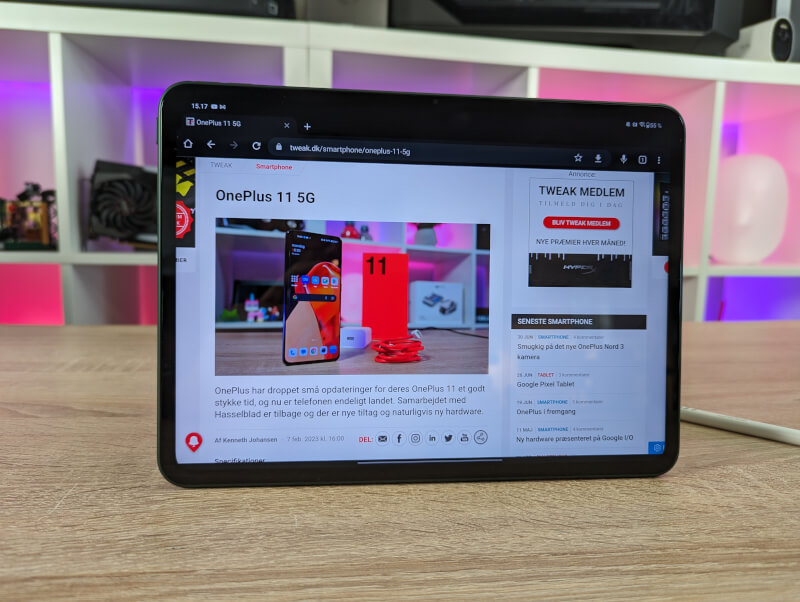
OnePlus has chosen to go with a 7:5 format, which I think fits the format really well. The resolution of 2800 x 2000 and a refresh rate of up to 144 Hz means that the screen provides both a sharp and smooth experience.
Software
The software on the OnePlus Pab is of course Android and it currently lands with Android 13. On top of that, OnePlus has added their own OxygenOS, which at the time of writing is in version 13.1.
Overall, it's a really good experience, and if you're already familiar with OnePlus and their phones, you'll immediately feel at home here.
The additions that OnePlus has made are quite discreet, and you get pretty close to a standard Android experience a long way down the road.
The additions from OnePlus include expanded options for customizing the style. OnePlus has also added the possibility of extra shortcuts and quick navigation through their Shelf, which is a Widget bar that can be pulled down anywhere on the main screen. Here you can add a selection of Widgets. There is not a huge selection of options here, but there are a few practical ones in between, such as notes, if you use it together with, for example, the OnePlus Stylo.
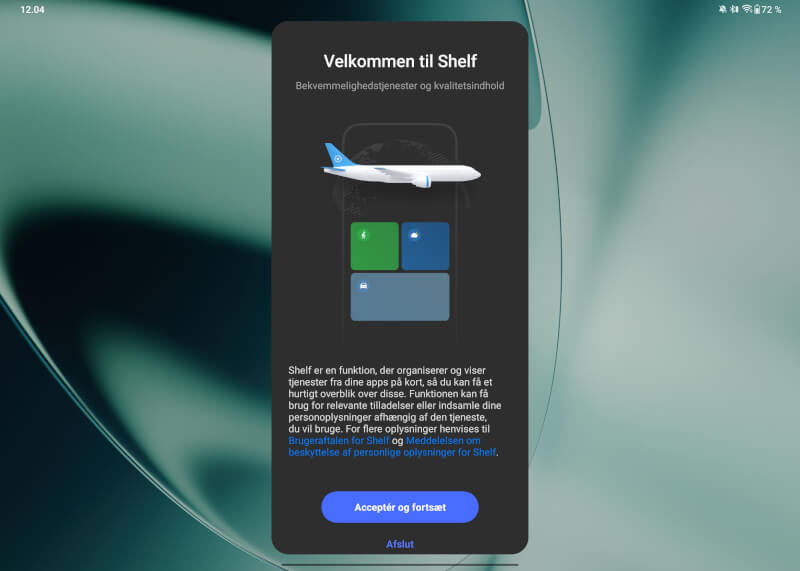
A little more practical is the possibility of shortcuts, via the small sidebar, which can be pulled out from the upper part of the right side. Here you can place your favorite apps so that they are always ready to start regardless of where you are. It is also possible to quickly start new apps next to the ones you have in a split window directly for the sidebar window. However, not all apps support that feature.
The biggest disadvantage of Android for tablets is still that the app support is not super good yet. Here, Android lags far behind Apple's solution for iPads.
All Google apps are now optimized for use on a tablet, but you can still run many apps that are in no way adapted or exist in a slightly strange intermediate stage.
It will of course depend a lot on how you use your tablet, how much you experience that problem. I mainly use tablets for media in the form of movies, series or music, or as a web browser in connection with work, etc. This means that I have not had any obvious problems during my test, since all the apps I use in that connection have worked fine and without problems on the OnePlus Pad
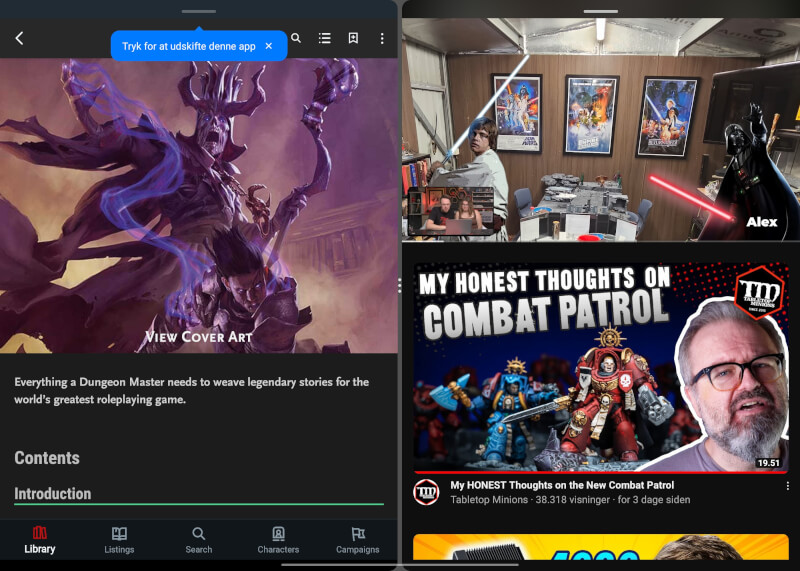
The larger tablet screen naturally gives more space to frolic in compared to the Android experience on a phone. This also means that some new features have been added to the operating system.
One of the most practical is the ability to run two apps on the same screen. Then you can split the screen with a web browser on one side and YouTube, Disney+ or a completely different app on the other.
For me, it was practical, for example, as I could participate in an online meeting and simultaneously take notes in a window next to it.
The test
I've been using the OnePlus Pad for a few weeks now for a variety of different tasks. However, it has primarily been for a wide selection of media distributed over YouTube, streaming and e-books of various kinds. I have seasoned that with a little gaming, to of course also test that part.
During my entire test, I didn't run into any task that the MediaTek Dimensity 9000 CPU together with the ARM G710 MC10 GPU couldn't handle without those problems.
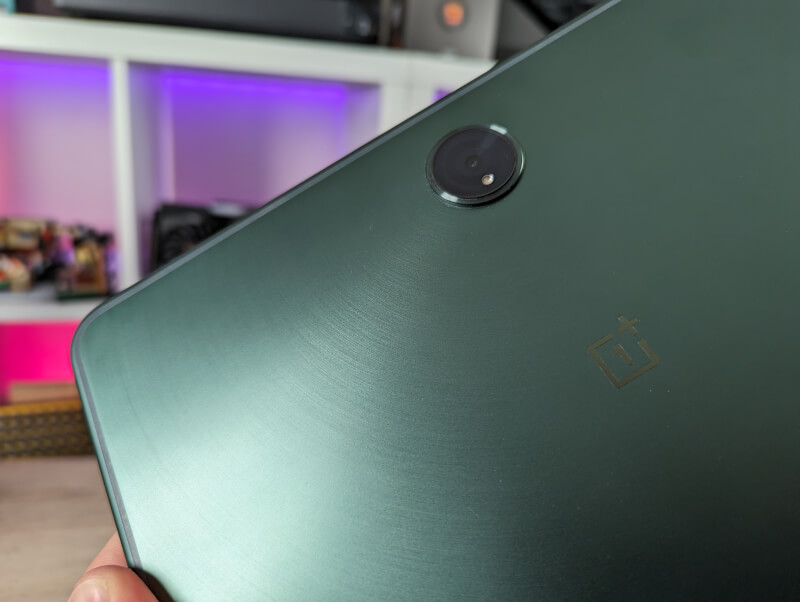
Especially the screen with its 144 Hz has been a pleasure to use. It has been a fast, responsive and delicious experience both to read and to watch movies on. OnePlus itself notes that the screen is Dolby Vision certified. However, it must be a somewhat adapted version, as the specifications on the screen do not live up to the normal "full version" of Dolby Vision.
Regardless, I would still call it a good experience, with good color levels and contrast, despite the fact that it is only an LCD screen and not an OLED screen.
In relation to films and media in general, the speakers have also surprised me positively. The sound is also listed as Dolby Atmos certified, and the four speakers create a very full and wide soundstage with a good illusion of surround.
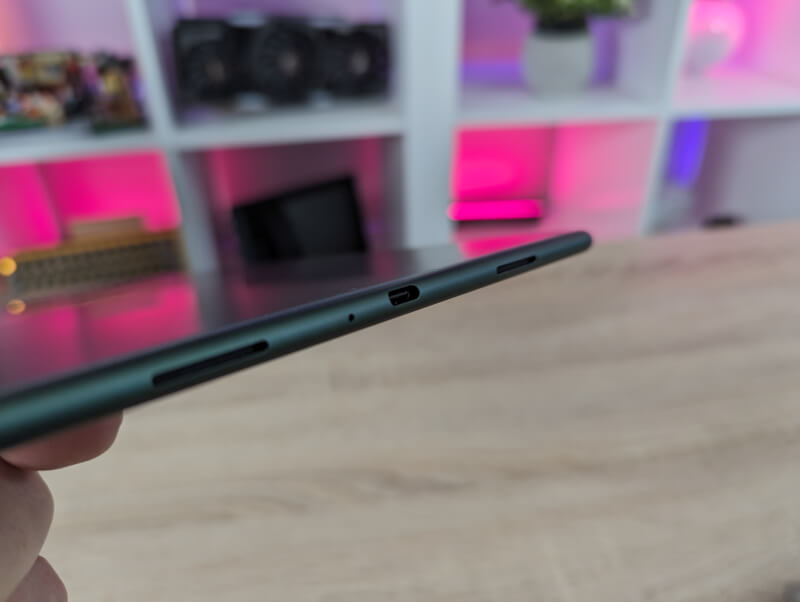
If you sit with the OnePlus Pad in your hands, it is easy to block one pair of speakers, which naturally reduces the sound image quite a bit.
The OnePlus Pad comes with a 9510 mAh battery and OnePlus notes that it should provide just over 12 hours of video playback. It agrees very well with my experience during my testing. In general, I would describe the battery life as good.
The standby time is listed as up to 30 days.
There is support for up to 67W SUPERVOOC charging with a OnePlus charger. However, there is not one included in the box, only a USB cable.
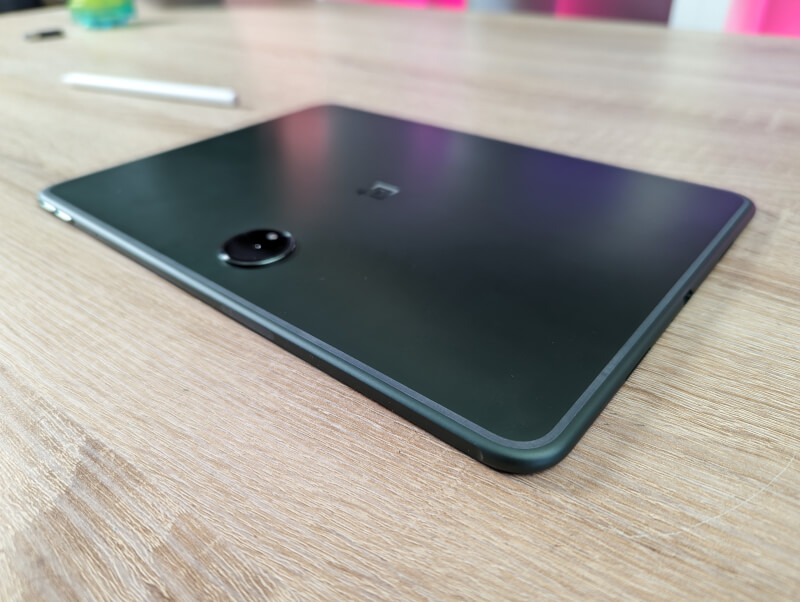
If you have a compatible charger, you can charge the OnePlus Pad from 0-100% in about an hour. It's been great to be able to charge so quickly, and it's generally one of the strengths of OnePlus. It is good to see that they have taken that strength over to their tablet as well.

The camera experience on the OnePlus Pad doesn't win any awards, but I don't expect that in any way with a tablet. In my world, cameras are on a tablet, mostly as a functional thing, so you can use it for video meetings and calls and things on that scale. It is and will never be a photo device, nor should you expect it to be.
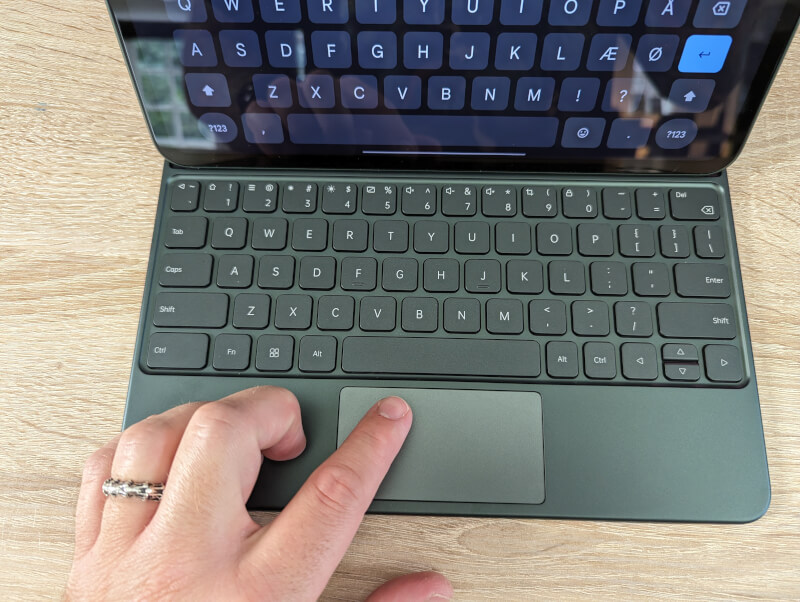
As part of our test kit, OnePlus had also sent their OnePlus Magnetic Keyboard along. It works partly as a cover and as a keyboard and trackpad. It can thus transform your tablet into more of a laptop experience.
The device connects to and receives power from the tablet via the three pogo pins at the bottom. The trackpad part works fine, and even if the experience of a mouse with a Tablet-based Android OS operating system requires a bit of getting used to, I can see that there can be advantages.
Unfortunately, the OnePlus Magnetic Keyboard does not come with a Nordic layout, so its usability is somewhat limited. You can set it to work like a Nordic layout, but then the physical characters of the buttons don't match and it can be quite confusing. 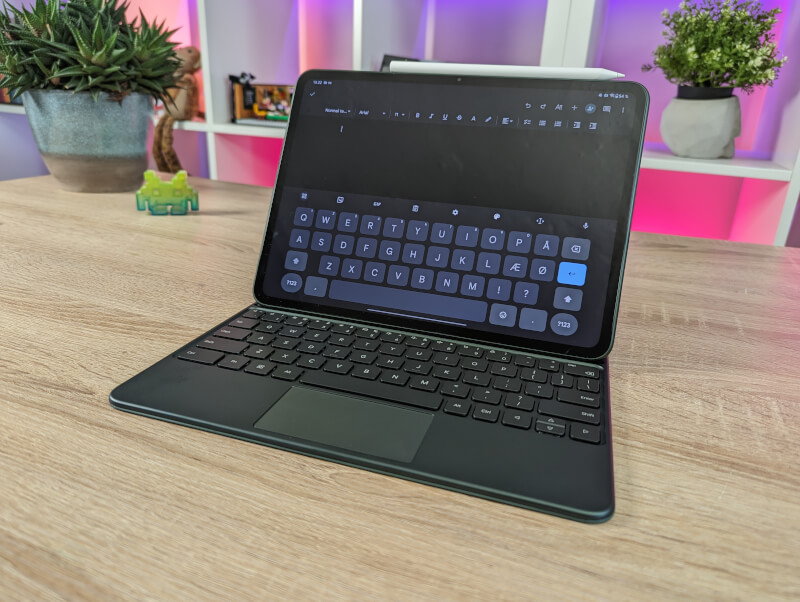
At the same time, I also found it a little frustrating that the large on-screen keyboard still jumped forward and took up half the screen every time I clicked on a text field. That part made the experience pretty much useless for me.
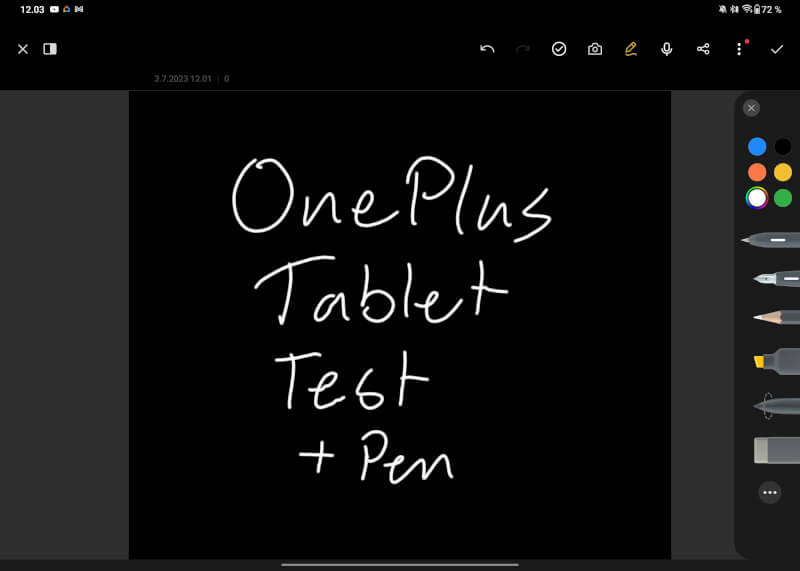
The OnePlus Stylo pen accessory was also included and I tested it briefly. In general, I think that the segment that needs a pen for their tablet is a bit limited. If you are in that group, I think that OnePlus' solution worked really well. It was a fast and responsive experience, without much lag.
If you are the type who likes to take notes by hand or draw a little, the OnePlus Stylo can be a good accessory.
Price
I can currently find the OnePlus Pad with an online price of just under 650$ . It is a little cheaper than comparable tablets from e.g. Samsung or Apple. It is DKK 200$ cheaper than the Google Tablet, but also without the included Hub Dock and the super good Google Home Hub integration.
The OnePlus Magnetic Keyboard can be found with an online price of just under 200$.
The OnePlus Stylo Pen can be found with an online price of 105$.
Conclusion
OnePlus has made a really strong entry into the tablet market. They have made a tablet that feels nicer than the majority of Android tablets. At the same time, it also performs super well for all the things I have come up with to throw at it.
The screen and sound are really nice and my time with the OnePlus Pad as a media gateway has been a pleasure.
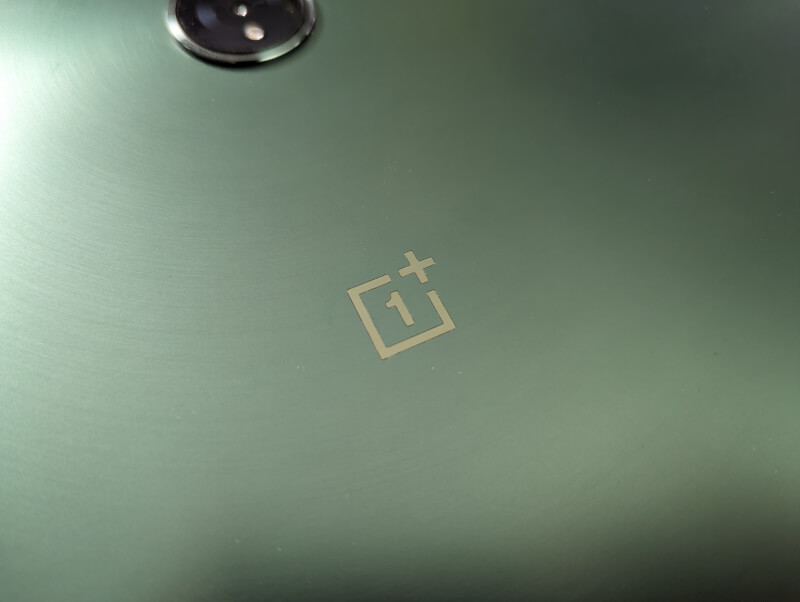
Not all accessories for the OnePlus Pad hit the spot, but since it is the tablet itself that I am testing today and not the accessories, I will only include it as a remark and not let it affect the overall score.
We end up with a final grade of 8 for a solid tablet that handles the task really well in terms of hardware. However, Android for tablets still needs some fine-tuning in relation to app optimization, etc., before reaching its full potential.
It's not OnePlus' fault, but it can't help but fall back a bit on the experience of their product, unfortunately.
Pros:
- Nice screen
- Good battery life
- Solid hardware
- Nice materials
Cons:
- Android for tablet still lacks optimization
Latest tablets
-
28 Augtablets
-
06 Jultablets
Apple iPad 9th Gen
-
17 Maytablets
Samsung crushes Apple's iPad Pro ad
-
08 Maytablets
Apple Pencil Pro
-
07 Maytablets
Apple unveils new M4 iPad Pro
-
01 Maytablets
iPad Pro 2024: Surprising new rumor
-
29 Aprtablets
Apple ready with new iPads: 'Let Loose' event 7 Ma
-
02 Aprtablets
Miniforum V3 with AMD Hawk Point APU released
Most read tablets
Latest tablets
-
28 Augtablets
Could the iPad Mini 7 be just around the corner?
-
06 Jultablets
Apple iPad 9th Gen
-
17 Maytablets
Samsung crushes Apple's iPad Pro ad
-
08 Maytablets
Apple Pencil Pro
-
07 Maytablets
Apple unveils new M4 iPad Pro
-
01 Maytablets
iPad Pro 2024: Surprising new rumor
-
29 Aprtablets
Apple ready with new iPads: 'Let Loose' event 7 Ma
-
02 Aprtablets
Miniforum V3 with AMD Hawk Point APU released






